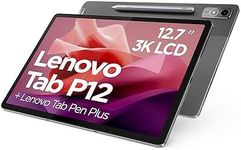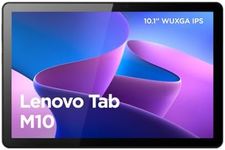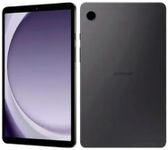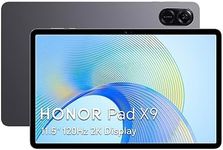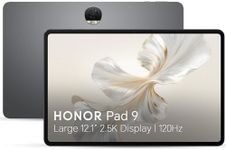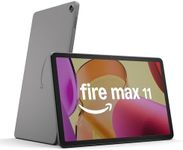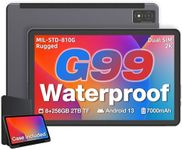Buying Guide for the Best Large Screen Tablet
When choosing a large-screen tablet, it's important to consider how you plan to use it. Whether it's for entertainment, productivity, or creative work, the right tablet can enhance your experience. Large-screen tablets offer more real estate for multitasking, watching videos, or drawing, but they also come with considerations like weight and portability. Understanding the key specifications will help you make an informed decision that aligns with your needs.Screen SizeScreen size is the diagonal measurement of the display, usually in inches. It's important because it determines how much space you have for viewing content and performing tasks. Large-screen tablets typically range from 10 to 13 inches or more. If you need a tablet for watching movies or drawing, a larger screen might be beneficial. However, if portability is a priority, you might want to consider a slightly smaller size that is easier to carry around.
ResolutionResolution refers to the number of pixels on the screen, which affects the clarity and detail of the display. Higher resolution means sharper images and text. Common resolutions for large-screen tablets include Full HD (1920x1080) and higher, such as 2K or 4K. If you plan to use your tablet for graphic design or watching high-definition videos, a higher resolution is preferable. For general use, a Full HD resolution is usually sufficient.
ProcessorThe processor is the brain of the tablet, determining how fast and efficiently it can run applications. A more powerful processor can handle multitasking and demanding apps better. Processors in tablets range from basic models suitable for web browsing and media consumption to high-performance ones for gaming and professional applications. Consider your usage: if you need a tablet for heavy multitasking or creative work, opt for a more powerful processor.
Battery LifeBattery life indicates how long the tablet can operate on a single charge. It's crucial for users who need to use their tablet on the go without frequent recharging. Battery life can vary widely, from around 6 hours to over 12 hours. If you plan to use your tablet for extended periods away from a power source, look for models with longer battery life. For home use, battery life might be less of a concern.
Operating SystemThe operating system (OS) is the software platform that runs the tablet. It affects the user interface, available apps, and overall experience. The main options are iOS, Android, and Windows. iOS is known for its smooth performance and app ecosystem, Android offers customization and variety, and Windows provides a desktop-like experience. Choose an OS based on your familiarity, app preferences, and how you plan to use the tablet.
Storage CapacityStorage capacity determines how much data you can store on your tablet, including apps, photos, videos, and documents. Tablets typically offer storage options ranging from 32GB to 512GB or more. If you plan to store a lot of media or large files, opt for higher storage. Some tablets also offer expandable storage via microSD cards, which can be a flexible option if you anticipate needing more space in the future.
Weight and PortabilityWeight and portability are important if you plan to carry your tablet frequently. Larger screens often mean heavier devices, which can affect comfort during prolonged use. Tablets can weigh anywhere from around 1 pound to over 2 pounds. If you need a tablet for travel or commuting, consider a lighter model that won't be cumbersome to carry. For home use, weight might be less of a concern.
Connectivity OptionsConnectivity options include Wi-Fi, cellular, Bluetooth, and ports like USB-C or HDMI. These determine how you can connect to the internet, other devices, and accessories. If you need internet access on the go, consider a tablet with cellular connectivity. For connecting peripherals like keyboards or external displays, check for the necessary ports. Bluetooth is useful for wireless accessories like headphones or styluses.
